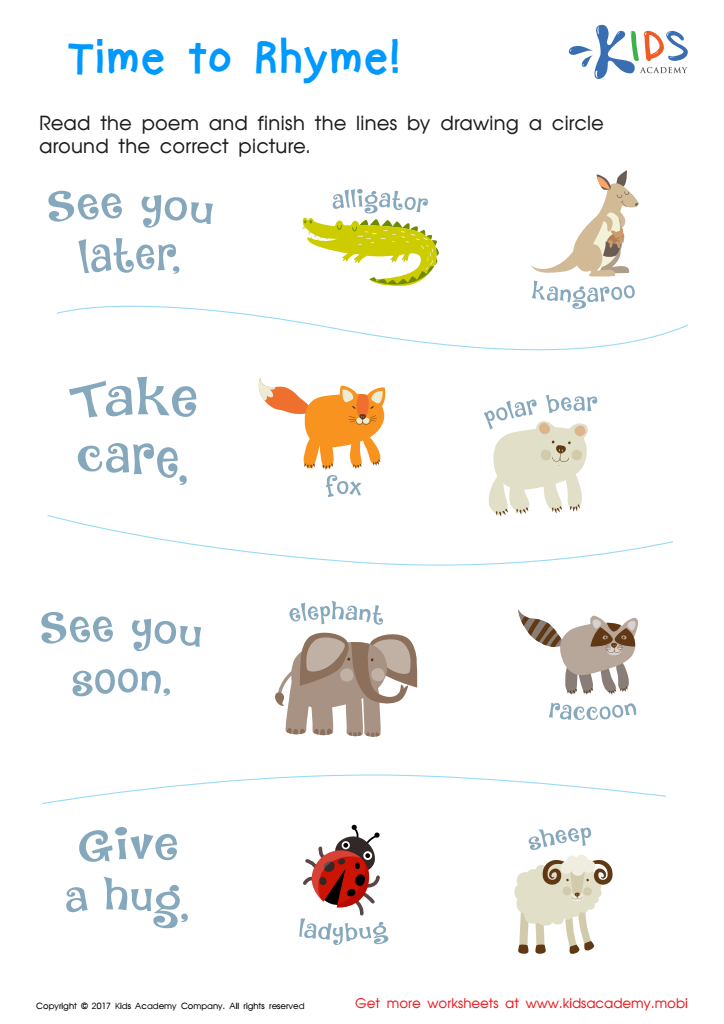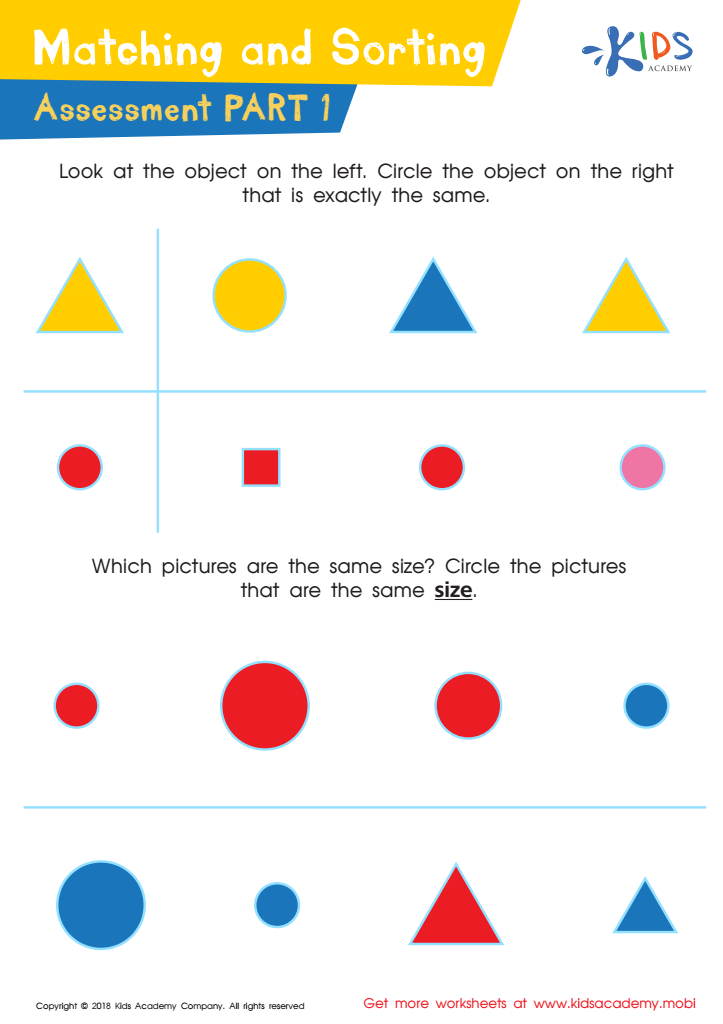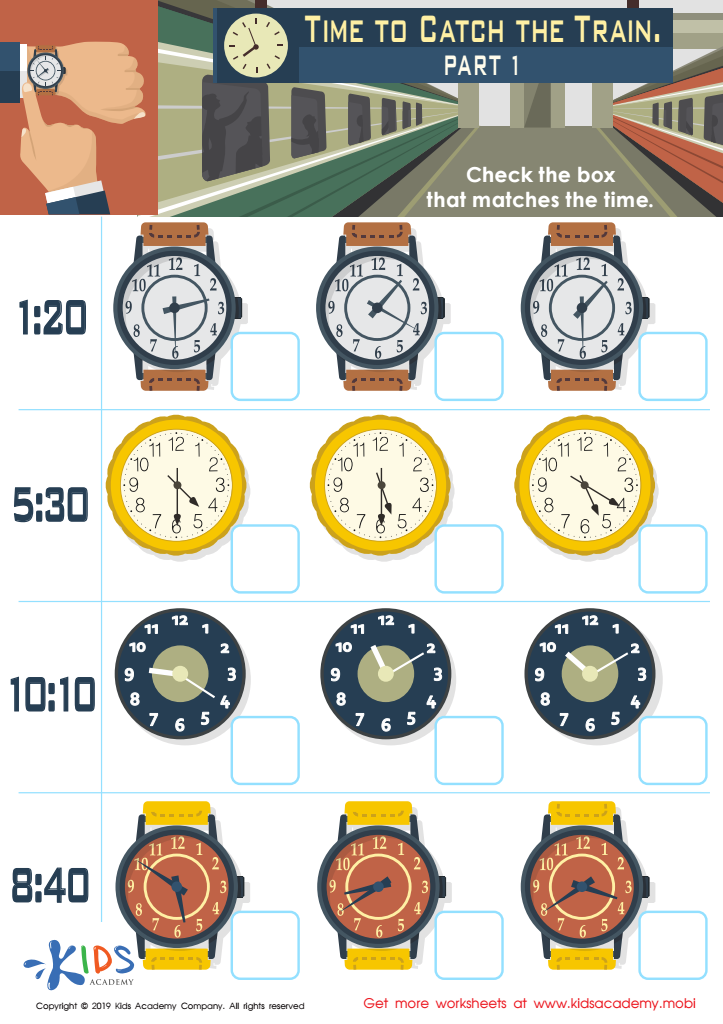Time-telling skills Normal Worksheets for Ages 4-9
3 filtered results
-
From - To
Discover our engaging Time-telling Skills Normal Worksheets designed for children ages 4 to 9! These interactive resources aim to build essential skills in telling time, helping young learners understand both analog and digital clocks. Our worksheets feature colorful illustrations, fun activities, and clear instructions to captivate and stimulate your child’s learning experience. From matching clock faces to drawing hands on clocks, each exercise is tailored to enhance comprehension and confidence. Perfect for educators and parents alike, these printable worksheets make learning about time enjoyable and accessible. Foster your child's independence and critical thinking skills in a fun and educational way!


Time to Rhyme Rhyming Worksheet


Matching and Sorting for Kindergarten: Assessment 1 Worksheet


Time to Catch the Train Part 1 Worksheet
Time-telling skills are essential for children aged 4-9, as they form the foundation for important life skills and independence. Understanding how to tell time helps children manage their daily routines, from getting ready for school to knowing when it’s time for meals or play. This awareness fosters a sense of responsibility and self-regulation, as children can better gauge how long tasks will take and when to transition between activities.
Additionally, learning to tell time enhances cognitive development, supporting mathematical concepts such as counting, fractions, and spatial awareness. It also incorporates elements of critical thinking, as children learn to analyze schedules and make decisions based on time constraints. Mastering these skills can boost their confidence and foster a sense of accomplishment.
Moreover, time-telling fosters increased communication between parents, teachers, and children. Conversations about time can reinforce language development and help children express their needs and desires more clearly. As they master these skills, children feel more like active participants in their environment, which is crucial for their overall growth and development. Thus, both parents and teachers should prioritize and encourage the development of time-telling skills for their lasting benefits in children’s lives.
 Assign to My Students
Assign to My Students







.jpg)








